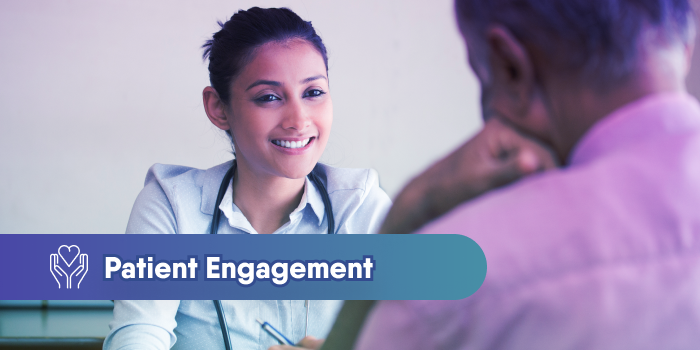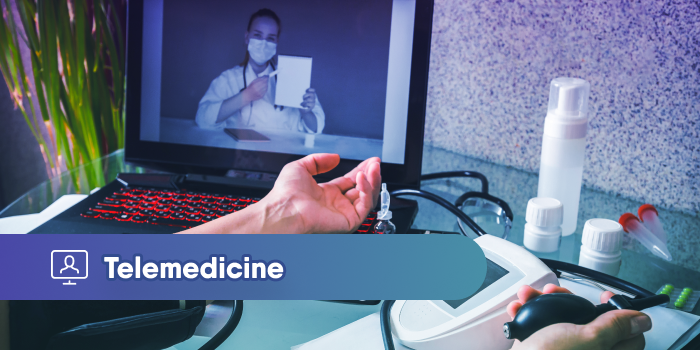Why Patient Engagement Is Critical to Your Healthcare Practice's Future
Patient engagement has increasingly become more critical in every healthcare organization, from hospitals to small medical practices. So, how will...

Practice management models and software are becoming more accessible and efficient than ever before. Thanks to the emergence of patient-centric healthcare, patients' voices are heard and recognized as a valuable health resource. Health organizations have found an operational model that fosters the quality of healthcare everybody deserves.
The patient-centric approach has been prevalent in the healthcare industry for some time now. Technological innovations and software development are integral to this healthcare industry revolution. These technological developments support medical and administrative services that can dramatically ease and enhance healthcare processes, communications, and workflow.
Patient-centric healthcare raises patient satisfaction levels, which creates benefits for healthcare providers and practices.
As a delivery service model, patient-centric healthcare emphasizes the patient's participation, preferences, values, and decisions in diagnosing, treating, and managing their health conditions.
It’s a healthcare model that empowers patients to be responsible and active in their healthcare, whether they are healthy or have illnesses or diseases. A patient-centric approach promotes collaboration and trust between healthcare providers and their patients.
Our existing healthcare system is too dependent on hospital or clinical care with insufficient focus or effort put into proactive preventive care. Healthcare providers can educate patients and reinforce their confidence in participating in their health management. As a result, patients are more likely to comply, make healthier lifestyle choices and take their prescriptions as directed.
During the COVID-19 pandemic, for example, patients have expressed high satisfaction with their healthcare provider's ability to provide the care and guidance they need at the right time and wherever they are, thanks to a patient-centric technology, such as telemedicine. It enables patients to communicate with their providers and get the care they need regardless of their location.
This patient-centric messaging platform helps contain COVID-19 and streamline the testing process. These efforts minimize exposure and maximize healthcare services in times of crisis.
Promoting physician-guided at-home care is an effective way to improve healthcare quality and patient outcomes. Encouraging patient engagement with patient-centric care may be the key to unlocking a high-quality, comprehensive, and inexpensive care model.
Patient-centric care may also reduce the risk of patients jumping from one doctor to another or hospital shopping. When patients have a strong relationship with their healthcare provider, they are more likely to keep appointments, follow advice, and stay healthier overall. It reduces the strain on the healthcare system as well as the out-of-pocket costs and inconvenience for patients.
In other words, the fewer times a patient makes repeat visits to a hospital or a doctor, the more effective and efficient our health care system becomes.
A patient-centered approach could develop a more collaborative healthcare environment for providers, patients, families, and staff.
The following elements and benefits demonstrate what patient-centric healthcare is and differentiates it from other operating care models.
Instead of focusing on the efforts and actions of health professionals, the patient-centric approach elevates the role and the participation of individuals in healthcare. Providers educate and empower patients, helping them become main actors, not just passive healthcare receivers.
A patient-centered approach incorporates comprehensive, multidisciplinary wellness programs that consider all aspects of a patient's overall health. Preventive healthcare — taking steps to address unhealthy lifestyle choices and other root causes of potential health problems — can reduce a patient's risk of needing advanced care.
A common patient-centric element of healthcare involves incorporating and respecting patients’ values, cultures, and decisions in managing health conditions. It’s a more holistic approach to the treatment and recovery of patients. As patients are more likely to comply with treatment, the rate of recovery increases, and readmissions decline. Patients' cooperation and compliance increase the effectiveness of treatment plans.
Patient-centric health care includes equal and timely evaluation of a patient's mental and social needs. Healthcare providers can direct patients toward social and mental health resources.
Business-wise, a patient-centric approach optimizes resources and lowers operational costs. In the same way, patients may save much money from going back and forth for readmissions or consultations.
Satisfied patients are more likely to remain with the same doctor or hospital. They are less likely to jump from one doctor or hospital to another, looking for a better care experience.
Overall, the patient-centric approach provides long-lasting benefits to the patients and their families, healthcare providers, and the system.
Technology innovations and software development have been helping resolve challenges that practices and healthcare providers have faced for some time.
Healthcare technologies offer convenience and efficiencies to medical practices, providing resolutions to their customer's pain points.
One solution to the fragmented and cumbersome healthcare communications situation is a secure, 2-way messaging platform.
Software like this can bring about significant changes in medical offices and how patients interact with healthcare providers. It makes appointments, confirmations, and rescheduling easy to handle.
Medical offices that use the proper communications and practice management software have experienced dramatic changes. They have fewer phone calls and patient no-shows, making a significant difference in their bottom line.
Front desk staff have more time to streamline their office management function and administrative responsibilities.
Patient-centric healthcare software helps practices reduce patient no-shows, quickly fill in vacated slots, and reschedule appointments without the hassle of making dozens of phone calls. Therefore, front office teams increase productivity, making their workdays more manageable while supporting business growth and increasing revenue.
The patient-centric approach encourages telemedicine, which has made patients' access to healthcare more convenient. As the COVID-19 pandemic forced people to distance themselves and avoid public places socially, more people are getting used to and looking forward to doing almost everything remotely from the comfort of their homes.
Patients can now use telehealth services to consult with health professionals about weight management, mental health, chronic disease management, and physical therapy.
Curogram is a leading provider of patient-centric communications and practice management software that streamlines and improves health communications.
A HIPAA-compliant organization like Curogram proves how a patient-centric approach in health messaging can dramatically improve office operations and patient satisfaction for healthcare businesses of all sizes.


Patient engagement has increasingly become more critical in every healthcare organization, from hospitals to small medical practices. So, how will...

Telemedicine, as a remote patient care model, is not a new practice in healthcare and existed for many years before the COVID-19 pandemic. It was...

Everyone wants to make more money, and medical practitioners are not exempted. Increasing your medical practice revenue is directly related to an...